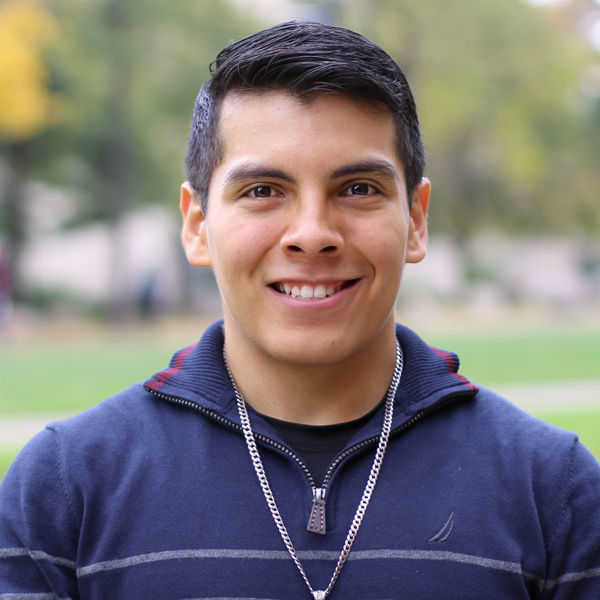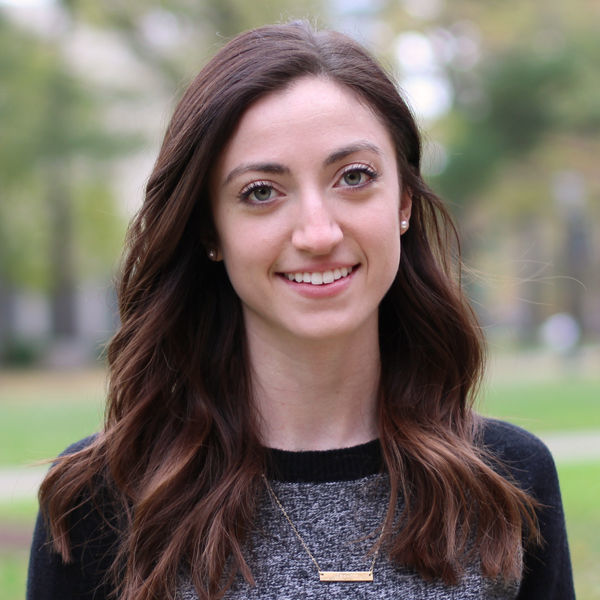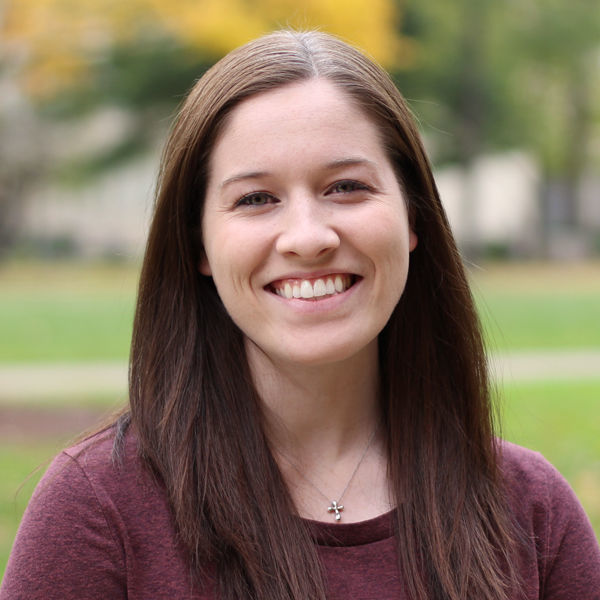From studying fruit fly wing patterning to stimulating retinal regeneration in zebrafish, four outstanding Notre Dame undergraduate students participated in a summer’s worth of research thanks to the Center for Stem Cells and Regenerative Medicine’s Summer Undergraduate Research Fellowships (SURF).
Through the generosity of several donors, these students were able to pursue cutting-edge research in the College of Science and the College of Engineering.
“The opportunity for these bright and talented undergraduates to pursue full-time research during the summer is a valuable component of their undergraduate experience,” says Professor David Hyde, Director of the Center for Stem Cells and Regenerative Medicine. “We are fortunate to have donors that understand and appreciate the value of undergraduate research and support our mission in this area.”
During the program, students gained experience pursuing their own research projects outside the traditional structure of the classroom, with most citing autonomy as one of their favorite aspects of the program.
 Francisco Huizar
Francisco Huizar
Francisco Huizar worked in the lab of Jeremiah Zartman, Assistant Professor in the Department of Chemical and Biomolecular Engineering, studying morphogen signaling in the patterning of the Drosophila melanogaster wing disc.
“My research fellowship this summer was nothing short of an amazing experience! I absolutely loved my time in the lab knowing that what I did will ultimately help play a role in finding different ways to combat cancer. The research experience really helped me affirm my decision to continue pursuing research for the rest of my life,” said Francisco, a senior pursuing dual degrees in chemical engineering and applied computational mathematics and statistics.
After graduation, Francisco plans to pursue a Ph.D. degree in biomedical engineering and an M.D.
 Jacob Kalathoor
Jacob Kalathoor
Jacob Kalathoor, a sophomore majoring in Biological Sciences, worked in the lab of David Hyde, Professor of Biological Sciences and the Rev. Howard J. Kenna, C.S.C. Director of the Center for Zebrafish Research. Under the guidance of Dr. David Hyde and Manuela Lahne, Research Assistant Professor, Jacob studied the role of Myosin Heavy Chain 10 (MYH10) during Interkinetic Nuclear Migration in the regenerating zebrafish retina.
“In addition to all of the research that was accomplished, I was also able to grow immensely. Working full time in a laboratory setting provided me with invaluable skills from designing my own experiments to being able to communicate my research clearly,” he said.
After graduation, Jacob plans to enter a combined M.D./Ph.D. program, with his doctoral research focus being in regenerative genetics.
 Anne Lentino
Anne Lentino
Anne Lentino, a senior Biological Sciences major, worked with Dr. David Hyde and Senior Research Scientist, Leah Campbell, assessing the role of tumor necrosis factor alpha (TNFa) during retinal development and retinal regeneration using transgenic and knockout zebrafish.
“I was able to successfully generate plasmid constructs that will serve as powerful tools moving forward in my study of tumor necrosis factor alpha during retinal regeneration. I was also able to identify over one hundred fish with a specific genetic makeup that I will use to genetically study TNFa signaling in the coming year. In the process, I learned several useful techniques and skills that will serve me greatly moving forward. This summer was extremely valuable and has reminded me of my passion for research,” she said.
After graduation, Anne plans to pursue dual M.D./Ph.D. degrees.
 Lillian Spatz
Lillian Spatz
“This summer, I began characterizing our lab’s newly-acquired stard9 mutant zebrafish line. I wanted to know how a mutation in stard9 would affect zebrafish, paying particular attention to changes that mirrored the problems observed in Niemann Pick Type C Disease (NPC) – a disease characterized by cholesterol buildup in lysosomes. I successfully identified sixty adult zebrafish that contained the stard9 mutation using DNA sequencing,” said Lilly Spatz, a senior majoring in Biological Sciences who worked in the lab of Kevin Vaughan, Associate Professor of Biological Sciences.
“My work this summer was an important stepping stone for furthering my research during the upcoming academic year. Now that I have identified the mutant zebrafish, I can perform behavioral and histological studies on the fish to determine how stard9 affects development,” she said.
After graduation, Lilly plans to pursue a career in biological research in the field of genetics.